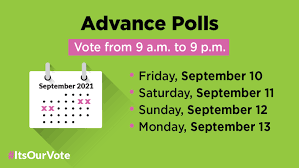Once again, we are watching the spectacle of American vote-counting in super-slow motion. CNN’s vaunted Magic Wall is augmented by John King transcribing the latest results with a digital magic marker,a process that appears makeshift and amateurish. Tired, harried, and sweating election officials are telling the media that they are doing the best they can. Media video of vote counters blurs their faces to protect them from violence. This is the case in all states, not just those in which the results are close, but of course attention is focused on the latter.
The delays appear to come from the laborious counting of mail-in ballots, which tend to favour Democrats by wide margins. Democrats, therefore, watch the trend with growing satisfaction and even excitement. Republicans’ reactions are mixed, with some accepting the eleventh-hour reversals, but others threatening to litigate. Certainly there are Republican voters who believe these reversals are evidence of election fraud.
Why the Delay?
The question being asked around the world is why the US can’t produce quick and reliable election results, when virtually every other democracy can. The recent Brazilian election is a case in point, with over 100 million ballots counted and official results announced the evening the polls closed.
Part of the answer is complexity. American midterm and presidential election year ballots include offices at all three levels of government and often several referenda. Parliamentary and presidential elections such as those in Brazil and France encompass only one office, and it is still possible to count ballots by hand. (Hand-counting is impossible though for ranked-choice ballots, which some countries use).
A second part of the answer is that the states run elections, and some states, both historically and to the current day, have seen their mission as restricting access to voting for parts of their population, particularly Blacks, minorities, and the poor. Some locations have Election Day line-ups several hours long, so votes are still being received several hours after the polls close.
The third, and likely most important part of the answer is the expansion of mail-in and drop-off voting since the pandemic. In many states, counting of these ballots does not begin until after the polls close. Security often involves checking information the voter is required to provide on an outer envelope that contains the marked ballot inside. One example would be checking a voter’s signature against the election office’s previous specimens of their signature. This process can be further delayed by the voter-friendly practice of “ballot curing,” in which the elections agency attempts to contact voters whose identify information is incomplete or problematic, and gives them an opportunity to provide the necessary information to enable their votes to be counted. In any event, verifying and counting these ballots can extend Election Night to Election Week or even Election Fortnight.
Worthwhile Canadian Initiative
Bearing in mind the strength of the “not invented here” syndrome in a country that routinely celebrates its exceptionalism, I will nonetheless suggest a simple Canadian practice worth emulating – the advance poll. Pre-pandemic Canadian elections opened one advance poll (or polling place) in each constituency for one day for voters who expected to be absent on Election Day. Now, the practice of advance polls has expanded to encompass opening many polls for several days. For example, in the 2021 federal election held on Monday Sept. 20, advance polls were open from 9 a.m. to 9 p.m. from Friday Sept. 10 to Monday Sept. 13.

Elections Canada (the non-partisan federal agency that oversees federal elections, and another worthwhile Canadian initiative) estimates that 5.8 million Canadians voted in advance polls, over a third of the total vote of 15.6 million. Not only would advance polls provide an alternative to mail-in voting, but they would increase convenience for voters and therefore increase the overall vote. Of course, holding advance polls costs money, but it would save money spent on processing mail-in ballots and would produce final results faster.
Other approaches could involve starting to count mail-in ballots when they arrive, finding easier ways to verify mail-in ballots than signatures, and, even if no change is made in the process, devoting more resources (machines and clerks) to verifying mail-in ballots.
Trust in the voting system is critical to trust in democracy. Producing timely election returns is part of restoring that trust. Surely a nation with such incredible technical, scientific, and managerial capability as the US should be able to find ways to do this, so that Election Night regains its original meaning.

Leave a Reply